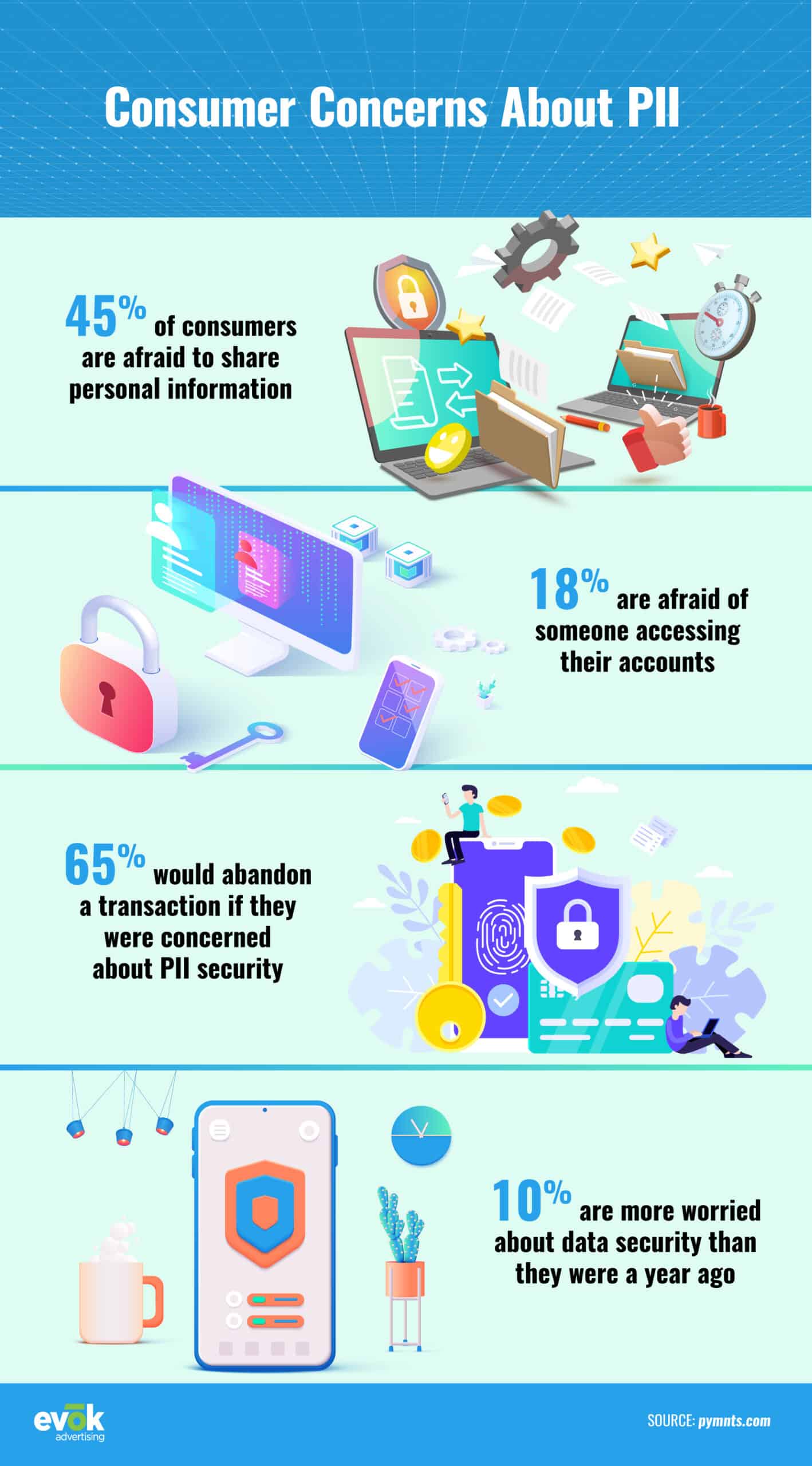
Pros of Using Non-PII in Behavioral Targeting
There is a lot of talk about how companies and agencies are using certain data, and whether or not that is some kind of “invasion of privacy”. While it certainly makes sense that consumers are reluctant to share certain elements of their life, relating specifically to health, financial, and other sensitive categories, there are ways that people can still be targeted using non-personally identifiable information or PII.

PII can be labeled sensitive or non-sensitive. Non-sensitive PII is information that can be transmitted in an unencrypted form without resulting in harm to the individual. Nonsensitive PII can be easily gathered from public records, phone books, corporate directories, and websites. This might include information such as zip code, race, gender, date of birth, and religion — information that, by itself, could not be used to discern an individual’s identity.
Sensitive PII is information that, when disclosed, could result in harm to the individual if a data breach occurs. This type of sensitive data often has legal, contractual, or ethical requirements for restricted disclosure.
Non-PII is also useful to marketers in many situations, since it does reveal a wealth of information on when prospects and customers visit touchpoints, how they interact and other segment-wide insights, etc. but it doesn’t help with personalization or individual targeting. Non-PII data includes cookies and device IDs.
In the B2C world, when you visit an online shopping site, you must share your contact details and payment details at the very least, in order to use the service. If the service requires you to ‘sign-up and log in’ then they will ask for even more details- everything from sex to shopping preferences. While sharing this data, you have to often choose if you ‘consent’ to or ‘give permission to’ the marketer to use this data for more than just completing the current transaction and whether they can store your data for future use. Often, the customer will make a choice based on the convenience and the significance of the service in their life.
In general, marketers can assume that customers would not like to share PII, and if they have to, they would prefer to share the bare minimum PII required, and certainly would not like it stored for future marketing use, unless they are highly engaged with the brand and trust the marketer implicitly. Examples of this degree of engagement and trust can be seen with long-running loyalty programs, especially in the travel and hospitality sector, where ‘being recognized’ is an important part of the experience for the regular traveler.

When it comes to advertising and marketing, non-PII targeting allows a better experience for both the consumer, as well as for agencies and brands in the following ways
- Most consumers believe personalized advertising means unique content, based on their previous purchase or shopping behavior, relevant web searches, and is delivered at a time when they are looking for a particular product or service. In fact, 71% of consumers are not bothered by ads if they are relevant. In most cases, gone are the days when a person visits a website and gets non-stop pop-up ads with irrelevant messages. These ads create a better experience for the consumer since they are not overwhelmed, and the ads they receive are geared to them
- As an agency, using PII for behavioral targeting is very beneficial. We can assume that the right ads are getting to the right people at the right time, which in turn can help eliminate wasting of a client’s budget, which also helps in reducing the overall cost per acquisition. Whenever we speak with a client or potential client, we make sure to let them know that we use non-PII when targeting. If we are using any third-party or outside vendors, we make sure they are fully vetted and follow the proper rules and guidelines.
- Another benefit that consumers enjoy is the overall number of ads they are served. As people are going about their daily business online, they don’t as many ads as they used to. As mentioned, most of the ads they are served are relevant to them. Sure, there will be times when you get served ads and you think to yourself “why am I seeing this?” but it would be rare that you see that type of ad over and over again.
The bottom line is, that there are plenty of ways that your data is being used and collected. Many more companies are being transparent in how they collect and use your data, and government agencies are also on top of companies such as Google, Facebook, Amazon, and others to make sure they are not in violation. As long as companies and agencies continue to target based on non-PII, it’s a better, safer, and more enjoyable experience for everyone involved.